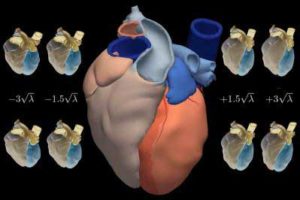national institute of dental and craniofacial research
IADR/AADR Journal of Dental Research releases large studies on osteonecrosis of the jaw
Alexandria, VA — Osteonecrosis of the jaw (ONJ) is a debilitating bone condition that affects the jaws and occurs as a result of reduced local blood supply to the bone. The literature in this area has been severely limited since most investigation…
NIDCR funding to US dental schools diminished from 2005 to 2009
Adding to the national debate on the state of dental research in U.S. dental schools, an article released today titled “Total NIH Support to U.S. Dental Schools, 2005-2009”, published in the International and American Associations for Dental Researc…
AADR testifies to the FDA advisory panel on dental amalgam
Gaithersburg, MD — On December 14-15, 2010, the U.S. Food and Drug Administration (FDA) convened an Advisory Panel to discuss several scientific issues that may affect the regulation of dental amalgam. At the conclusion of the hearing, the Panel v…
For your teeth, Thanksgiving dinner is a real food fight
If you’re lucky, it will all be kisses and hugs around the Thanksgiving dinner table, with friends and family near and dear gathered about, and puppies gathered around your feet waiting for table scraps.
But peace won’t reign within the confines o…
Substantial consumption of fluoride increases chance of mild fluorosis
CHICAGO, Oct. 25, 2010 — Young children who consume substantial amounts of fluoride through infant formula and other beverages mixed with fluoridated water or by swallowing fluoride toothpaste have an increased chance of developing mild enamel flu…
Scientists Discover Unique Source of Stem Cells: Baby teeth
Scientists report for the first time that “baby” teeth, the temporary teeth that children begin losing around their sixth birthday, contain a rich supply of stem cells in their dental pulp. The researchers say this unexpected discovery could have important implications because the stem cells remain alive inside the tooth for a short time after it falls out of a child’s mouth, suggesting the cells could be readily harvested for research.
Taste Receptor Cells Share Common Pathway
Although sweet, bitter and umami (monosodium glutamate) tastes are different, researchers are finding that information about each of these tastes is transmitted from the various taste receptors via a common intracellular signaling pathway. The identification of a common pathway runs counter to widespread belief among some researchers in the taste field who have long held the view that the different tastes require distinct machinery within the cell to transduce their signals to the brain, which is responsible for processing taste perceptions.
Researchers discover how embryo attaches to the uterus
Researchers funded by the National Institutes of Health have discovered how an embryo initially attaches to the wall of the uterus?what appears to be one of the earliest steps needed to establish a successful pregnancy. Specifically, the researchers found that 6 days after an egg is fertilized, the embryo uses specialized molecules on its surface and molecules on the surface of the uterus to attach itself to the wall of the uterus.
Scientists decipher tooth decay bug’s genome
Researchers in Oklahoma have deciphered the complete genome sequence of Streptococcus mutans, the main organism implicated in causing tooth decay. The work, supported by the National Institute of Dental and Craniofacial Research, has been made freely available online. Said one of the team members involved in the four-year effort: “Building on this basic research may one day lead us to new approaches for preventing and treating tooth decay.” Added another: “By targeting the adherence genes, for example, we might be able to develop a way of preventing S. mutans from sticking to teeth.”


